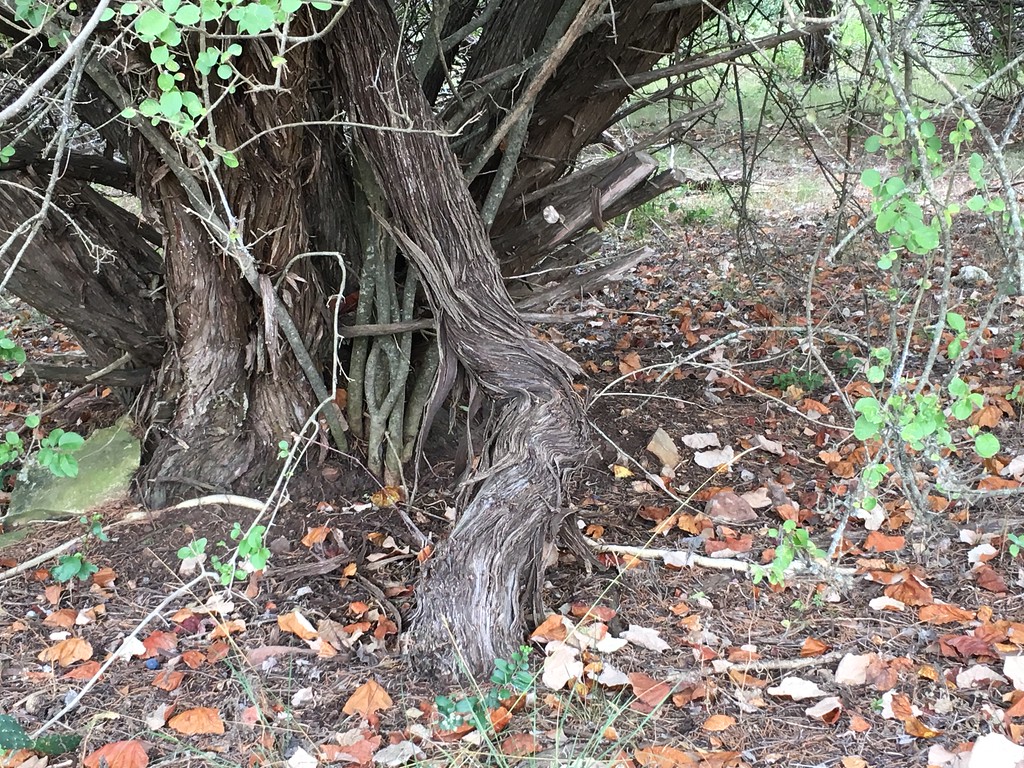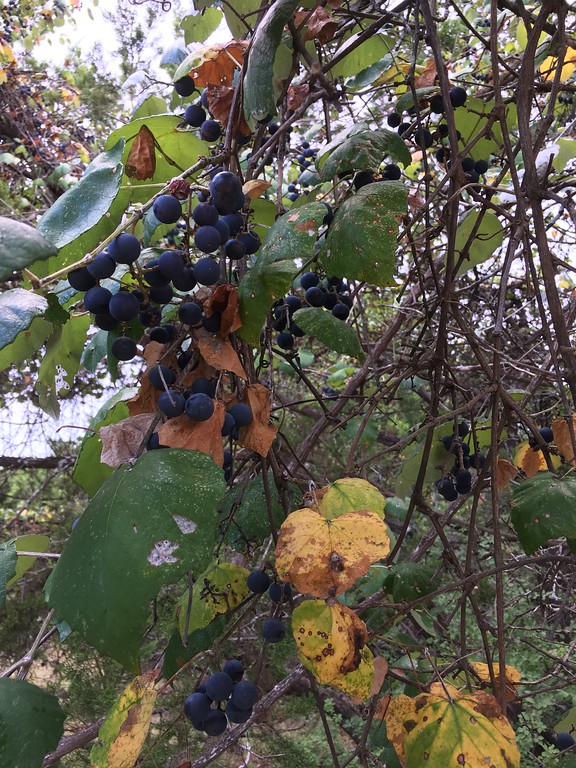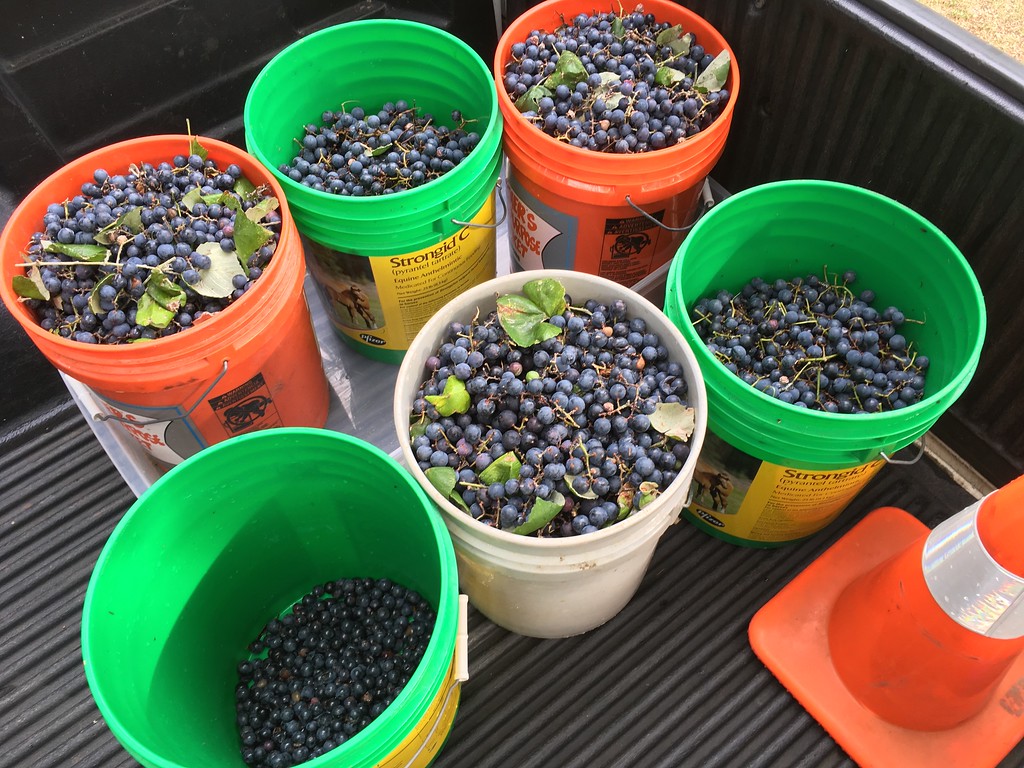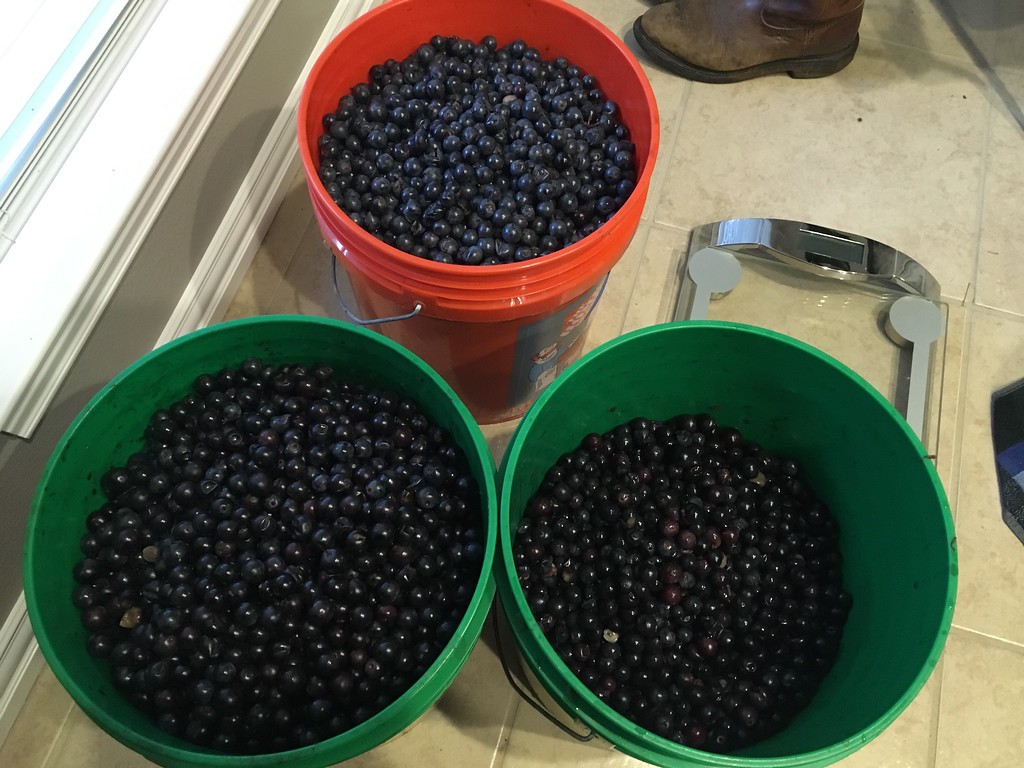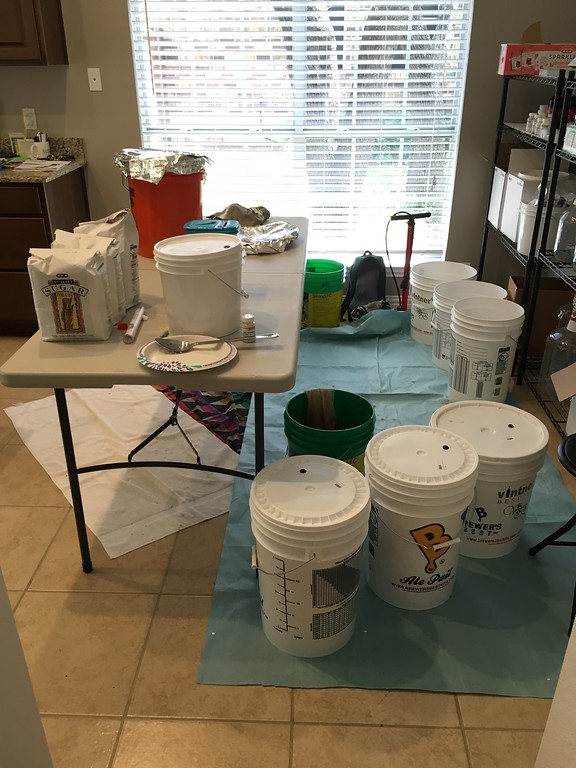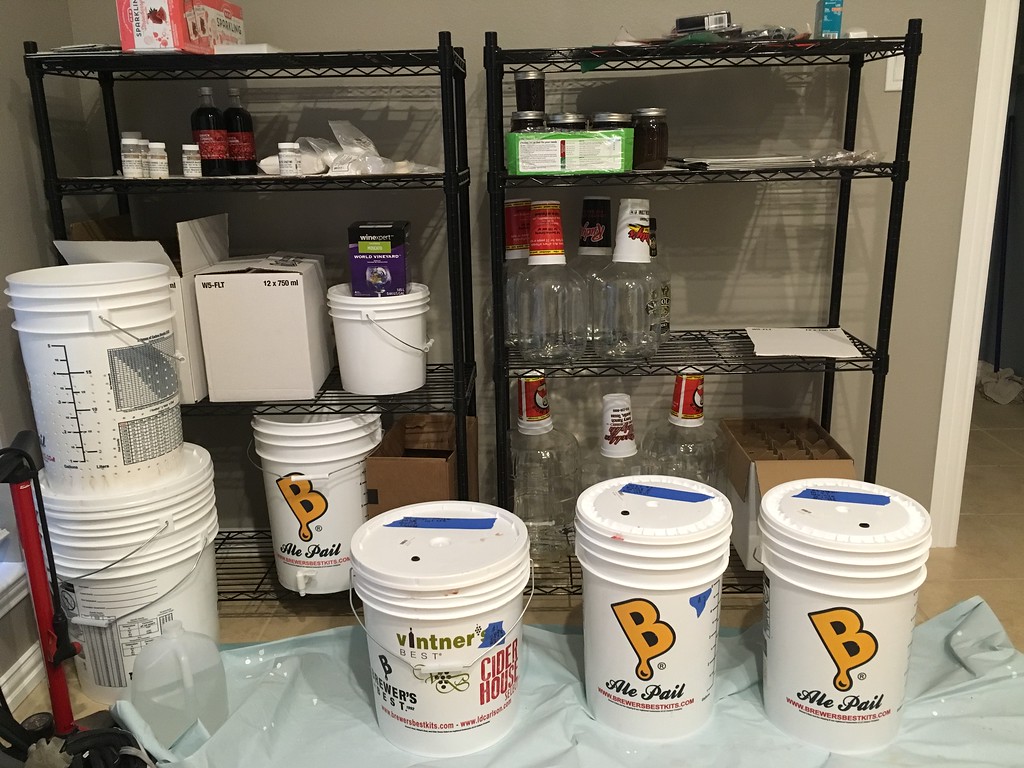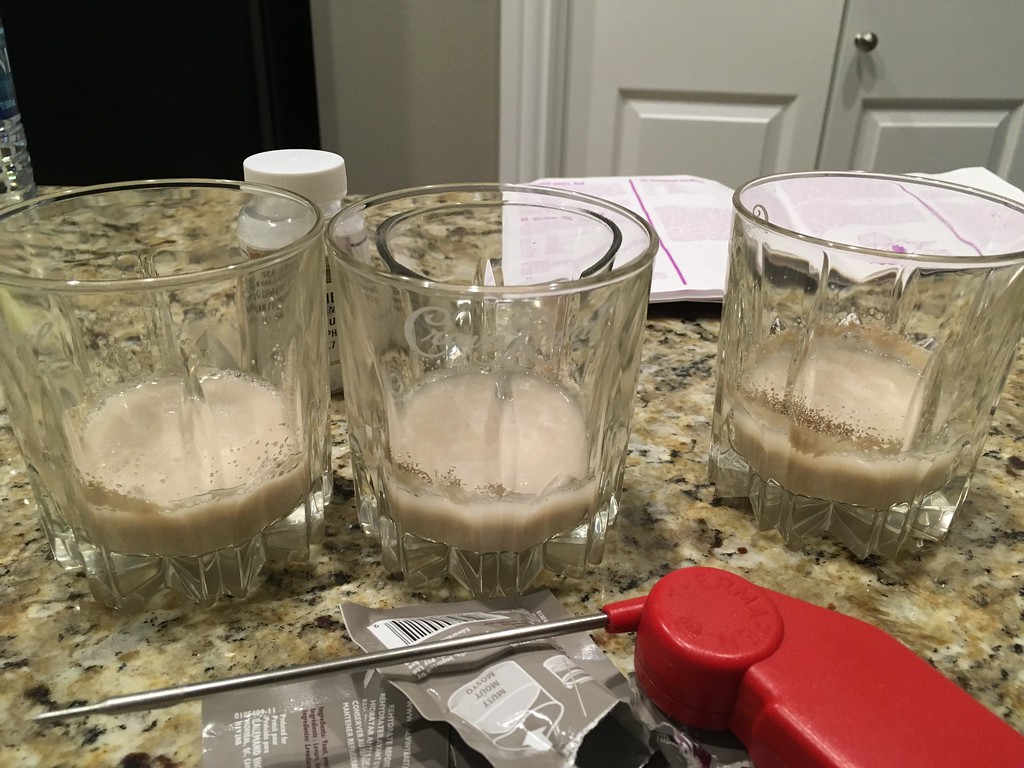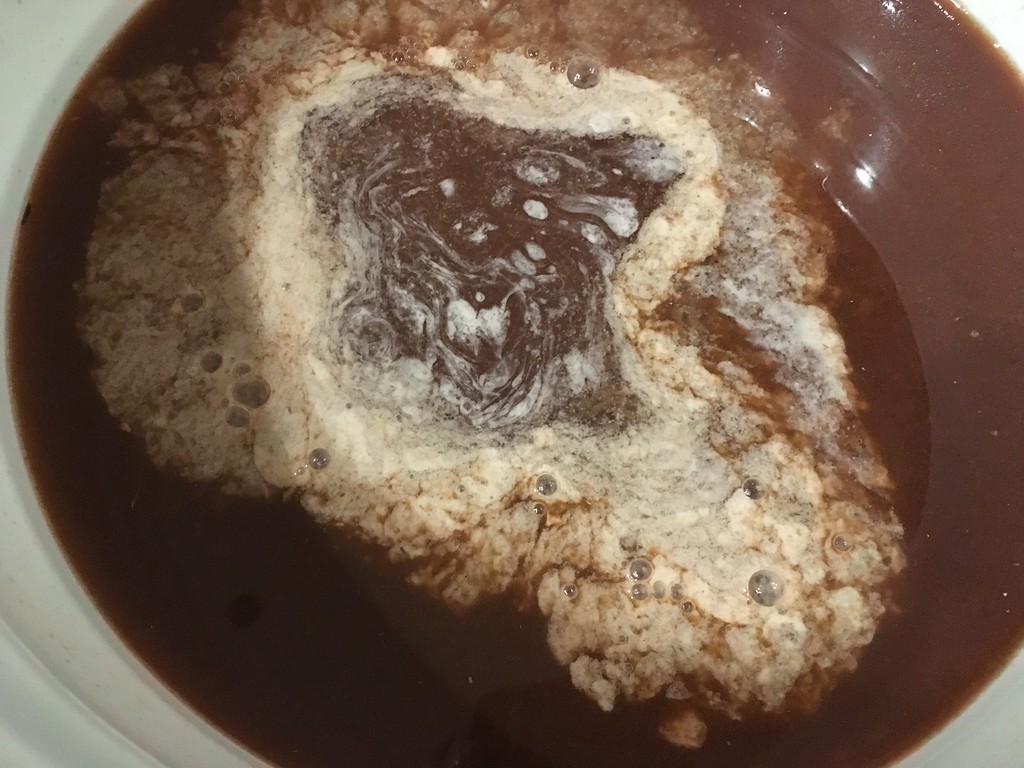Thank you John.
When I run home for lunch I'll put a pc of paper towel in the holes as you referenced. I couldn't bring myself to peek this morning inside those primaries. Nerves?
Oh, and I ran the pH on the pressed grapes as I was preparing more to raise the acid contents. Scale read pH of 2.6. I didn't think to try the acid test and SG/Brix on raw grapes until after I had them in the freezer for several hours. I suppose I can run over to the tree at lunch, grab a few and press them for those. I don't think those metrics will have changed much in four days. Or will they? Now that I think about it, when you test the acid content, it would be the slurry (skins&juice), right? But when you check the SG/Brix of the grape, is it just the 'meat' juice? Or is it also the slurry?
What I like most about this discussion is the process. My only prior experience was last year following a little 20 page paperback 'recipe' book with basic instructions. The more I read of other sources, the more I was confused. Now - and much thanks to you - I have a much broader understanding of how this works. Still in infancy, I'm feeling like I kind of 'get it' now and how you approach this/solve problems. I'm thinking the next big thing are all the additives to modify things/bring things in-line etc. Someone asked me what it's like to make wine. I said "It's a whole lot of up front labor followed by a bunch of chemistry and then waiting to see if it worked". I still hold that thought. I've got the labor part nailed. It's just the chemistry, steps and little details I need to fill in to make a drinkable product. I have zero aspirations of making a lot of wine. Heck, just looking at 15gal in primaries is a lot of wine and if I calculated right about 60+ bottles. That's one a week to drink! I DO want to try some other wines as well.
Your evaluation of the process is pretty much on track, at least as far as task performance goes, there's lots of "farmer" parts and "artist" parts to learn, and much of that comes from experience. Being able to taste grapes in the field, know where they are, when they'll be ready, and what processes to select for making your wine that year to get the best you can out of the crop. Fortunately, some of this can be measured scientifically, but not all.
The conventional wisdom surrounding testing grapes on the vine involves taking a representative sample of the grapes, normally from different parts of the vineyard (wouldn't apply in your case I suppose), and smashing / macerating the grapes, pulp, skins, etc, and then filtering the resulting juice (through a fine strainer or cheesecloth or the like) to obtain a sample free of large particulates, then do your testing. It only takes a couple of drops to check the BRIX / SG with a refractometer, maybe a couple of ml to check the pH with your meter. You should do something similar when testing / adjusting must prior to AF. I typically mix well and scoop a bit (juice, skins, pulp and all) and put into a blender to puree it, then dump it into cheesecloth to collect the juice to test, works fine for me, doesn't take much.
As far as how the acid and sugar change on the vine, let me first say that I don't know much about muscadine grapes and their development, but assume that they progress on the vine in a fashion similar to the more familiar vinfera grapes. As they hang and mature, the acidity decreases, the sugar content increases, the seeds mature from a green to brown color, the tannins mature, and the flavors mature, all things you can see, measure, and taste. I do not know what your grapes' pH gets to when mature, but you can figure it out by monitoring the BRIX and pH every few days, and recording the readings. Grapes destined for white wine are normally picked early, while they still have some acidity in them (3.2, 3.3 or so). Grapes destined for big red wines are harvested later, letting the BRIX get up into the mid 20's or so, which can put pH's in the upper 3's in warm climates. Things like rainfall and drought can also affect the sugar / acidity, so harvesting at the proper time from a weather standpoint is in play as well. Your grapes may never reach BRIX in the 20's, or pH above 3, I just don't know about muscadines, but maybe one of our other members who grows them will chime in. Might be that you picked too early at 2.6, might never get better........You gotta be a farmer first, bolstered by the wine knowledge you have in your head, and the recorded history about how your particular vines grow, produce and mature, to pick at the right time.
















































![[Upgraded] 9Pcs Tree Root Growing Box with Drain Holes, Half Transparent Plant Rooting Propagation Ball & Metal Core Twist Ties, for Fast Propagation Plants (Size M)](https://m.media-amazon.com/images/I/514MWQxtWOL._SL500_.jpg)






